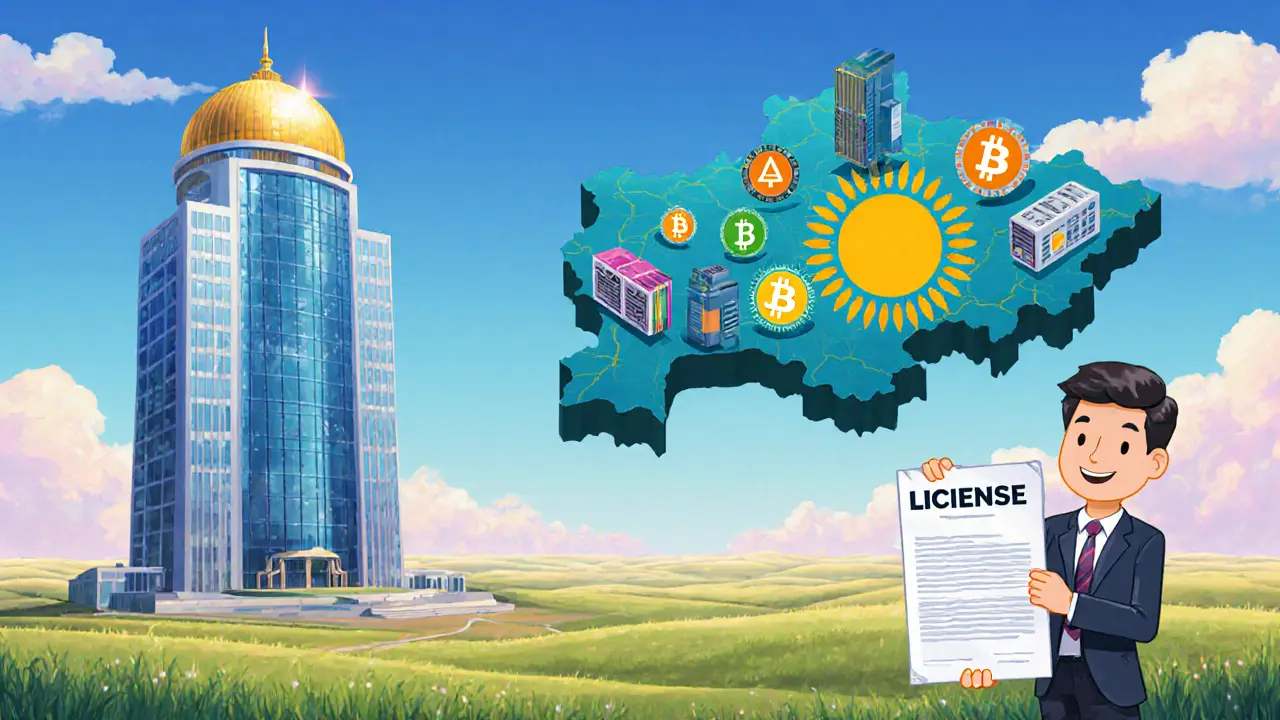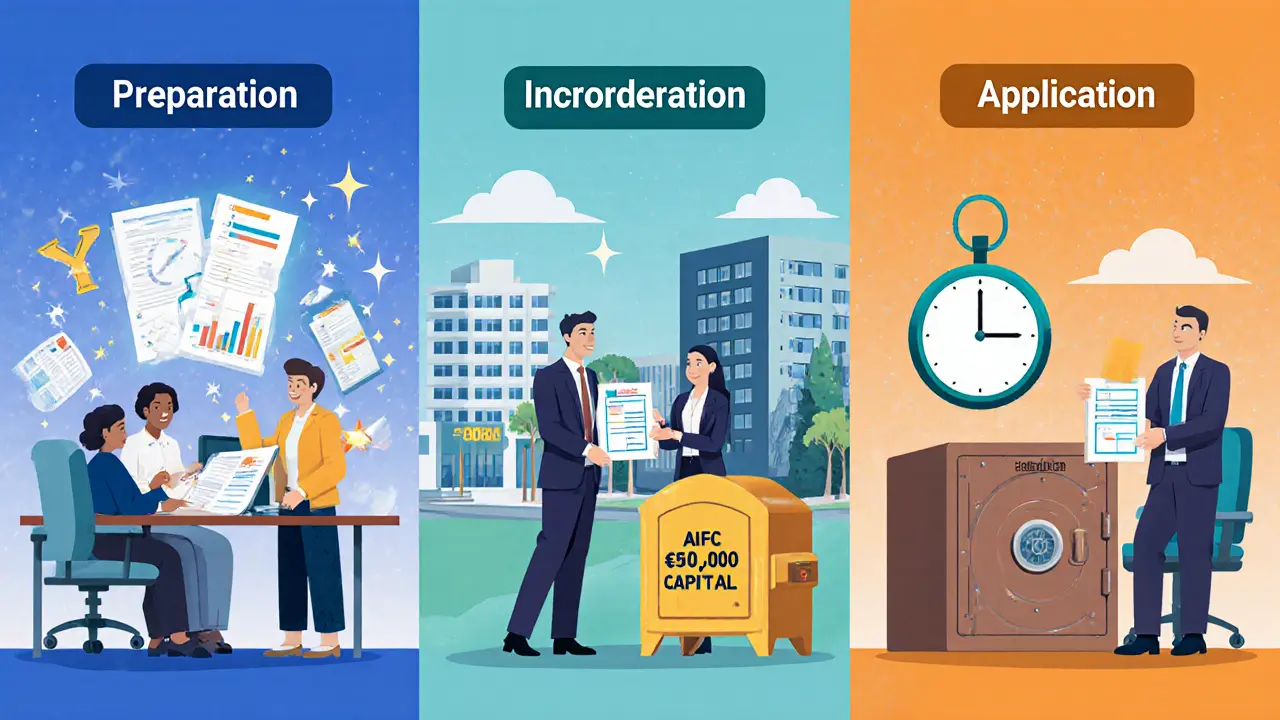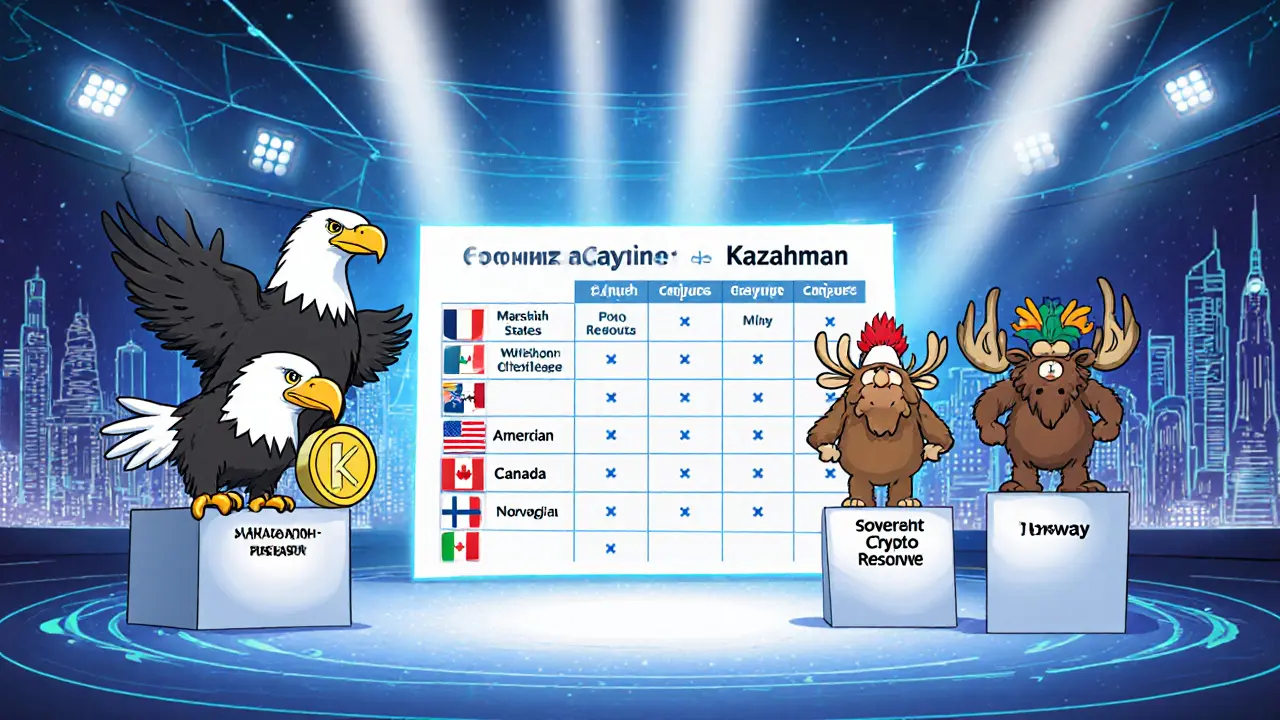
Kazakhstan Crypto Mining Jurisdiction Comparison Tool
Compare Kazakhstan with Other Jurisdictions
See how Kazakhstan's crypto mining regulations stack up against key competitors across important parameters. Input your preferred jurisdictions to generate a customized comparison.
| Parameter | Kazakhstan | United States | Canada | Norway |
|---|---|---|---|---|
| Licensing body | Astana International Financial Center | Varies by state (e.g., New York State Dept. of Financial Services) | Provincial securities commissions | Norwegian Financial Supervisory Authority |
| Tax on mining profit | 15% | 0-30% depending on state | 15-30% corporate tax + provincial rates | 22% corporate tax |
| Pool requirement | Mandatory licensed DMP | Optional, no central pool licence | Optional | Optional |
| Domestic asset-sale rule | 75% on AIFC exchanges | None | None | None |
| Required local staff | 2 local officers (AML & Compliance) | Varies | Varies | Varies |
| Capital reserve | €500,000 minimum | Varies | Varies | Varies |
| Time to obtain license | 6-9 months | 6-12 months | 3-9 months | 6-12 months |
Thinking about starting a crypto mining operation in Central Asia? Kazakhstan has become a hotspot, but the licensing maze can feel like a full‑time job. Below you’ll find a practical walk‑through of everything the government expects-from who can apply to how the tax bill looks-so you can decide whether the effort matches the payoff.
What the Kazakhstan licensing framework actually is
Kazakhstan crypto mining licensing is a government‑run system that authorises the extraction of digital assets within the country's borders. The framework lives under Order No.384 and is administered exclusively by the Astana International Financial Center (AIFC), which acts as the sole licensing authority. In practice, mining is treated as a notification‑based activity, but you still need to clear a multi‑phase approval process before you can flip on any ASICs.
Who must obtain a license?
Three categories of actors are forced into the AIFC pipeline:
- Local legal entities or individual entrepreneurs - you cannot register a foreign‑registered company and start mining from Kazakhstan without first creating a domestic legal form.
- Owners of a digital mining data‑processing centre - you either own the data centre outright or have a legally documented right to place mining rigs inside an authorised facility.
- Licensed Digital Mining Pools (DMPs) - all miners must join a pool that holds a specific AIFC licence; operating solo is prohibited by law.
If you try to run a parallel business (e.g., a logistics firm) while holding a mining licence, the regulator will shut you down. The rule is crystal clear: mining is an exclusive activity.

Step‑by‑step: How to get the licence
The AIFC process splits into three distinct phases that together take roughly six to nine months.
- Preparation phase
- Write a detailed business plan with realistic financial projections (cash flow, ROI, breakeven point).
- Gather corporate documents from any parent companies.
- Develop AML‑CFT policies, KYC software, and a client‑onboarding risk‑assessment framework.
- Identify senior management and outline the composition of the administration board.
- Incorporation phase
- Register a new company within the AIFC jurisdiction - this creates a Kazakh legal personality.
- Rent an office space inside the AIFC business park; a physical address is mandatory.
- Hire at least two local staff members: a qualified AML officer and a compliance officer.
- Deposit the required share capital into a Kazakh corporate bank account.
- Appoint a management board with a minimum of four members (CEO, CFO, Technical Director, Compliance Lead).
- Application phase
- Submit proof of operational AML‑CFT systems and KYC procedures.
- Provide client‑onboarding workflows with built‑in risk scoring.
- Showcase management board experience - résumés, past projects, and sector expertise.
- Demonstrate a working prototype or a live platform that can process mining rewards.
- Pay the application fee and wait for the AIFC decision (usually 60‑90 days).
Throughout these phases, the ICRIAP (Information Committee for Regulation and Improvement of Activities in the Sphere of Preventing Money Laundering) monitors your submissions and may request additional documentation.
Financial and operational obligations
Once the licence is in hand, the regulator imposes several ongoing duties:
- Tax rate: a flat 15% on net mining profits - one of the more competitive rates globally.
- Asset‑sale requirement: you must sell at least 75% of mined coins on AIFC‑approved exchanges. The rule moved up from 50% in 2024, making the domestic market a key revenue channel.
- Capital‑reserve rule: a minimum share‑capital deposit of €500,000 (or equivalent in KZT) is required to cover operational risk.
- Employment rule: the two local officers must stay employed for the licence’s duration; turnover triggers a compliance review.
- Reporting: monthly AML‑CFT reports, quarterly financial statements, and an annual audit by a Kazakh‑approved auditor.
In 2024, AIFC exchanges moved over $1.4billion in transaction volume, while the mining sector contributed $34.6million in tax revenue across three years - numbers that illustrate the government’s appetite for regulated crypto activity.
How Kazakhstan stacks up against other jurisdictions
| Jurisdiction | Licensing body | Tax on mining profit | Pool requirement | Domestic asset‑sale rule |
|---|---|---|---|---|
| Kazakhstan (AIFC) | Astana International Financial Center | 15% | Mandatory licensed DMP | 75% on AIFC exchanges |
| United States (state‑by‑state) | Varies (e.g., New York State Dept. of Financial Services) | 0‑30% depending on state | Optional, no central pool licence | None |
| Canada (Ontario, Alberta) | Provincial securities commissions | 15‑30% corporate tax + provincial rates | Optional | None |
| Norway | Norwegian Financial Supervisory Authority | 22% corporate tax | Optional | None |
The table makes it clear why Kazakhstan appeals to operators who want a single, predictable regulator and a relatively low tax burden, but it also shows the trade‑off: you lose the freedom to choose any pool or exchange.

Practical challenges and proven tips
Even with a clear roadmap, many newcomers hit snags. Here are the most common pain points and how to dodge them:
- Physical presence requirement: you must rent office space and keep local staff on payroll. Tip: partner with a local business services firm that offers “virtual office + staffing” packages - it saves you from hunting for a separate lease.
- AML‑CFT expertise: finding qualified Kazakh compliance officers can be tough. Tip: tap into the AIFC’s certified compliance training programs; graduates are pre‑approved for licence submissions.
- Management board composition: a four‑person board feels heavyweight for a small mining farm. Tip: combine roles where permissible (e.g., CFO also serves as Technical Director) after confirming no conflict‑of‑interest concerns.
- Timeline uncertainty: the 6‑9 month window can stretch if documents are incomplete. Tip: run a pre‑audit with a local law firm before filing - they flag missing items early.
- Energy costs: while Kazakhstan offers cheap surplus power, the 70/30 energy split (70% grid, 30% miners) means you may pay a premium for the mining share. Tip: negotiate a power‑purchase agreement that locks in rates for at least three years.
Future outlook: where the regime is headed
Regulation isn’t static. Recent statements from the Ministry of Digital Development hint at two possible directions:
- Tightening controls: the jump from 50% to 75% asset sales suggests the state wants more capital staying home. Expect stricter reporting on cross‑border transfers within the next 12‑18 months.
- Expansion of the crypto ecosystem: officials are piloting a sovereign crypto reserve that would be funded partly by mining revenues. If approved, licensed miners could receive preferential access to the reserve’s token‑sale proceeds.
Either way, the licensing model will remain the gateway. Operators who master the AIFC process now will have a competitive edge when the market opens up further.
Frequently Asked Questions
Do I need a separate licence for each mining pool?
No. You only need one licence that authorises you to operate through a licensed Digital Mining Pool. The pool itself holds the pool‑specific licence, and you join it under your mining licence.
Can a foreign company apply directly without forming a Kazakh entity?
No. The law requires a legal entity or individual entrepreneur that is registered in Kazakhstan. Most foreign operators set up a local AIFC company first.
What is the minimum share‑capital I must deposit?
The current threshold is €500,000 (or the equivalent in Kazakhstani tenge). This amount must sit in a Kazakh corporate bank account before the licence is granted.
How often do I need to submit AML reports?
Monthly AML‑CFT reports are mandatory, plus a comprehensive annual audit by an AIFC‑approved auditor.
Is the 15% tax rate applied before or after the 75% asset‑sale rule?
The 15% corporate tax is calculated on net profit after you have sold the required 75% of your mined coins. The sale itself does not affect the taxable base, but it must be documented.


Comments
Cynthia Chiang
Hey folks, if you’re thinking about diving into Kazakhstan’s mining scene, there are a few things you should keep in mind before you sign any papers. First off, the 15% tax is really attractive compared to many other places, but don’t let that blind you to the operational costs hidden behind the scenes. You’ll need to set up a local entity within the AIFC jurisdiction – that’s non‑negotiable and takes a bit of paperwork. The capital reserve of €500,000 can be a hefty upfront outlay, especially for smaller startups trying to get off the ground. Hiring two local staff members for AML and compliance isn’t just a checkbox; they must stay on board for the whole licence period, otherwise you risk a compliance review. Remember that you have to join a licensed Digital Mining Pool – solo mining is not allowed, so factor any pool fees into your budget. The mandatory 75% asset‑sale rule means you’ll be forced to sell most of your mined coins on local exchanges, which can affect your liquidity strategy. Energy costs can be lower than in Europe, but the 70/30 split of grid versus mining power means you might still face premium rates for the mining portion. It’s also wise to lock in a power‑purchase agreement for at least three years to avoid sudden price hikes. Don’t overlook the monthly AML‑CFT reporting requirements – they’re strict and require a solid internal monitoring system. A pre‑audit with a local law firm can save you months by catching missing documents early. If you’re a foreign operator, you’ll need to establish a Kazakh legal entity before you can even apply – there’s no shortcut there. The licensing process typically takes 6‑9 months, but delays are common if your documentation isn’t spotless. Keep an eye on the evolving regulatory landscape; the government might tighten the asset‑sale rule further in the next year. Lastly, consider partnering with a local service provider for virtual office and staffing solutions – it can streamline the whole set‑up phase. With careful planning, the Kazakhstan route can be a sweet spot for miners looking for low tax and decent infrastructure, but treat the licensing maze as a full‑time job from day one.